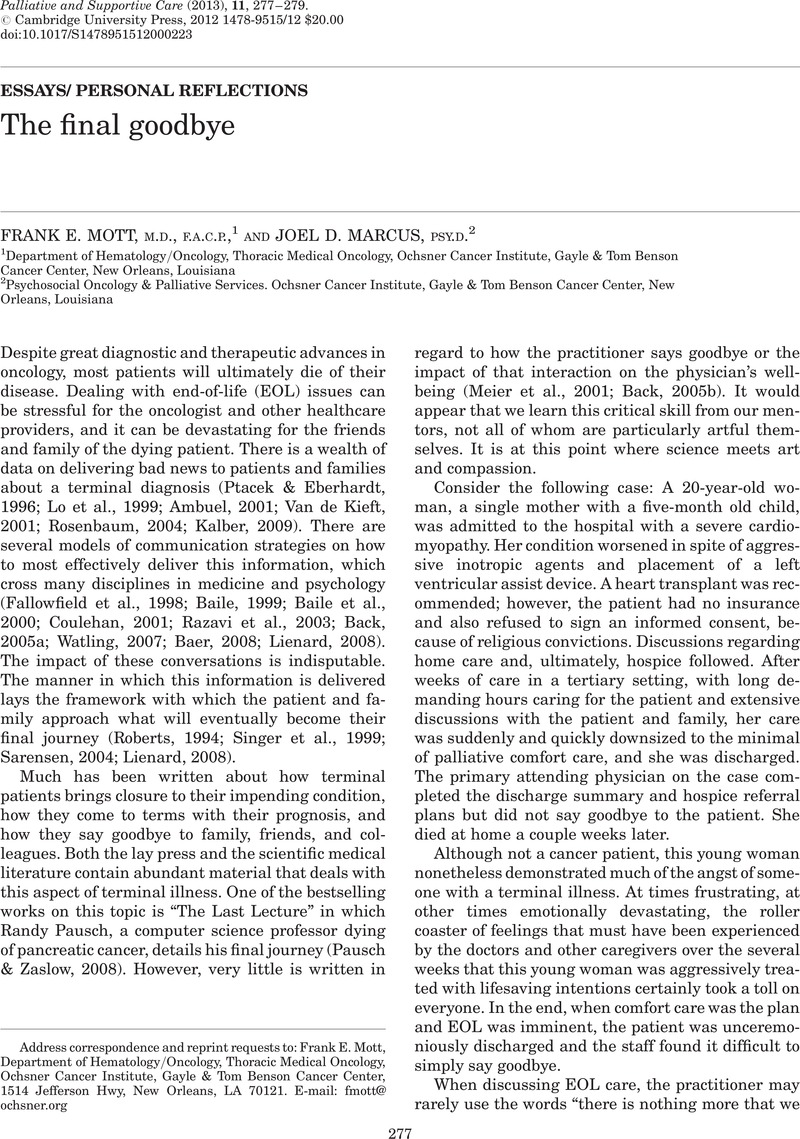Crossref Citations
This article has been cited by the following publications. This list is generated based on data provided by Crossref.
Mott, Frank E.
and
Adams, Kelly C.
2019.
Advance Care Planning and End-of-Life Issues in Head and Neck Cancer.
Journal of Palliative Care,
Vol. 34,
Issue. 1,
p.
18.
Bujdos, Veronica
Chekan, Kimberly
Marterre, Buddy
Frechman, Erica
and
Gabbard, Jennifer
2024.
“The Last Visit”: Saying Goodbye to Patients #493.
Journal of Palliative Medicine,



